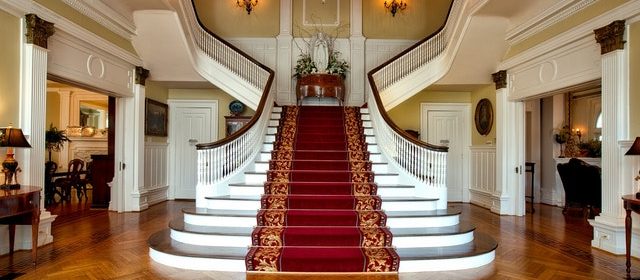Finding your Interior Design Niche

Before you can begin any design job, you must have some inspiration. If you are fully conscious of which design fashions you are always drawn to, developing ideas should be rather simple. Otherwise, it can be tough to even find out where to get started. If that’s the circumstance, the question becomes: how can you go about locating your interior design style?
In this article you will come across a couple queries. Ask yourself everyone, in turn, and look over each one of the corresponding choices. You will probably discover some tips in your answers. In the conclusion, research whichever fashion catches your attention often and see how you’re feeling.
Past or current?
If you are about the PAST, you might want to think about:
- Contemporary: Slick lines and ’60s flair, modern style will make you feel abstract.
- French: French country design is filled with love. Its curved furniture and lavish décor can remind you of royalty.
- Conventional: Conventional layout is the personification of “old world” with classic lines, comfy furniture and orderly lines taking the fore.
If you would rather enjoy the PRESENT, then you might like:
- Modern: Ultra-clean lines and minimalism are the secrets to the top design tendencies.
- Scandinavian: Using warm forests and snug armadillo area rugs, this style is a combination of contemporary and rustic.
- Eclectic: Described as the diversion away from conventional, eclectic provides an opportunity to produce your very own casual aesthetic.
Total of colour or neutral?
If you are into glowing, daring Colours, you may like:
- Contemporary: Contemporary layout is filled with bold, saturated colours such as burnt orange, peach yellow and navy blue.
 Eclectic: The make-your-own facet of diverse layout means you can essentially use whichever mixture of colours grabs your attention.
Eclectic: The make-your-own facet of diverse layout means you can essentially use whichever mixture of colours grabs your attention.- Conventional: Conventional design is about invoking richness. It entails a whole lot of deep, dark colours such as reds, greens and blues.
Should you rely on NEUTRALS, then you will favour:
- Modern: Modern seems are usually constructed around monochromatic colours.
- Scandinavian: The foundation of a colour palette relies on whites and greys. Occasionally you will find pops of vibrant colours such as blue and pink.
- Coastal home interiors: Blunt whites and dusty sandy tones are the backbone of true coastal fashion and design. As you may imagine, blues and whites are the dominant accent shade.
Less is more v More is more
Should you think LESS IS MORE, you may enjoy:
- Contemporary: Contemporary spaces have a fresh feel. There are normally few accessories, the majority of which are work forward.
- Modern: Modern style is about minimalism and including lots of simplicity where possible.
- Scandinavian: Scandinavians focus on a theory named hype, a part of that concentrates on being comfy without becoming too lavish or extra.
If you are a lover of a MORE IS MORE doctrine, try:
- Eclectic: When putting together an eclectic layout, it is very important to balance the space with lots of special accessories.
- Conventional: Conventional is always all about developing the feeling and sensation of cosiness. These rooms are designed with loads of accessories, typically heirlooms and antiques or bits with a background story.
- French: French styles are characterised by opulence. Gold and silver embroidery are typical.
City or country?
Should you belong at home in the CITY, you will like:
- Modern: Cities are hubs for contemporary layout and new ideas.
- Contemporary: Contemporary design could possibly be from years past, but it was quite modern for the day. It has managed to endure the test of time without feeling out of date.
- Scandinavian: Scandinavian appearances are dearest to contemporary design. They follow the very same principles using a European twist.
If you would rather focus on RURAL style, you might feel attracted to:
- Rustic: As its name implies this design is constructed around the notion of living in a cottage in the woods.
- Coastal: even though it might not be woodsy, coastal designs are a fantastic selection for people who love spending time on the coast.
- French: Once again, it is in the title. French designs are a variant on a similar European rustic.
Finding your interior design style for the very first time can be rough. After all, how can you know where to begin, not nearly how to place a whole space together? You do not need to go through this process alone. Allow the questions above to supply you with a way for finding your layout inspiration.
Do you understand what your unique interior décor and design style is? How can you go about this? Discovering it in the first location?
